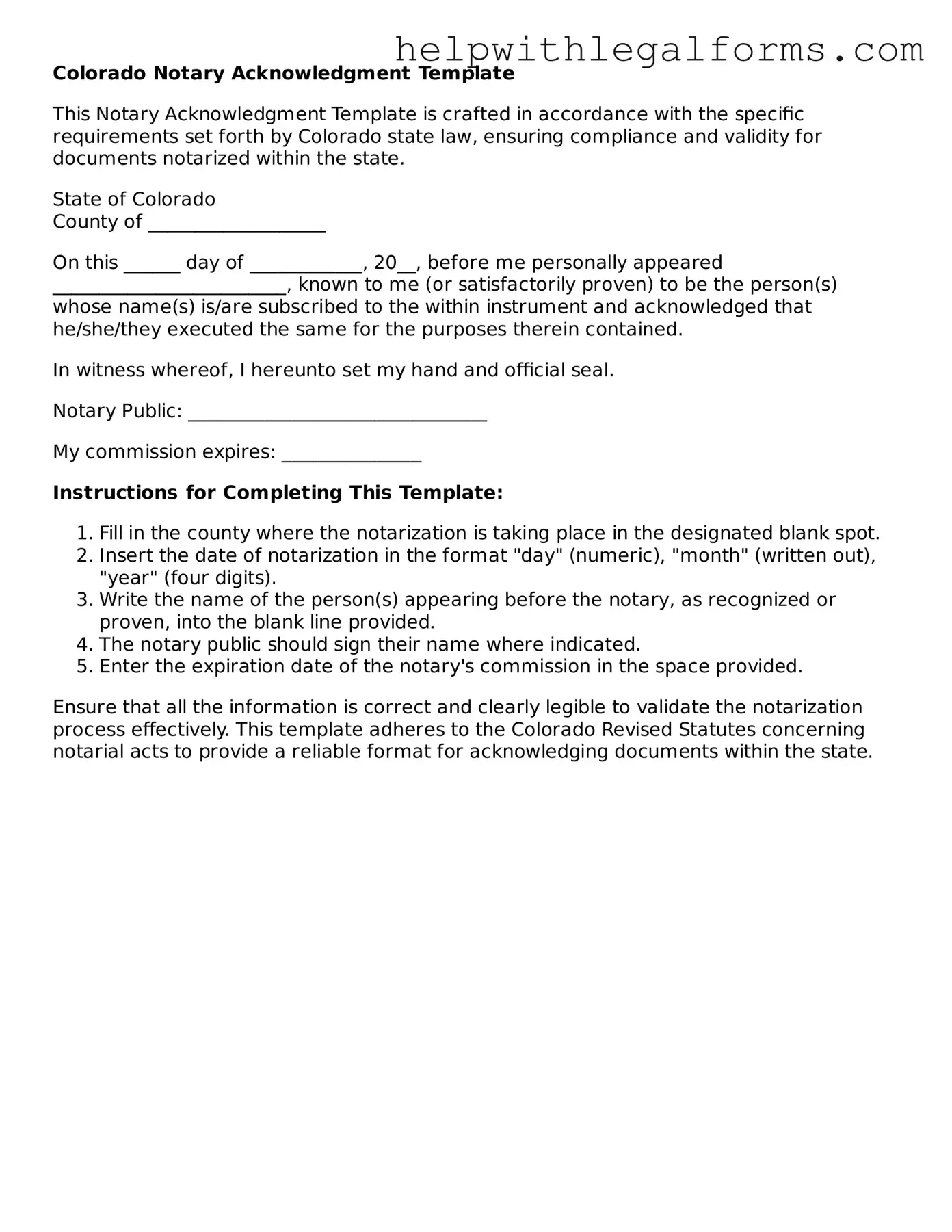What is a Colorado Notary Acknowledgement form?
A Colorado Notary Acknowledgement form is a document used by a notary public in Colorado to certify that a signer personally appeared before them, acknowledged the signature as their own, and indicated that they signed the document willingly and for the purposes stated within it.
Who needs to use a Colorado Notary Acknowledgement form?
Any individual or party involved in a legal or formal transaction requiring the validation of their signature on a document in Colorado may need to use this form. It's often required for documents related to property transactions, legal agreements, power of attorney, and other significant commitments.
What types of documents can be acknowledged by a Colorado Notary Acknowledgement form?
Documents such as deeds, contracts, powers of attorney, affidavits, and other legal documents that require official acknowledgment of a signature can use the Colorado Notary Acknowledgement form.
Where can I get a Colorado Notary Acknowledgement form?
Colorado Notary Acknowledgement forms are available from several sources, including the Colorado Secretary of State's office, legal supply stores, and online resources that offer state-specific legal forms.
How does a notary public complete the acknowledgment?
A notary public completes the acknowledgment by having the signer appear before them, verifying the signer's identity, witnessing the signer acknowledge the signature as their own, and then filling out the acknowledgment form. The notary will include the date, their signature, and their seal on the document.
Is a Colorado Notary Acknowledgement form the same as a jurat?
No, a Colorado Notary Acknowledgement form is not the same as a jurat. An acknowledgement verifies the identity of the signer and their acknowledgment of the signature. A jurat, on the other hand, requires the signer to swear or affirm the truthfulness of the document's contents before signing it in the presence of the notary.
Are there any identification requirements for the signer?
Yes, the signer must present valid identification to the notary public to have their signature acknowledged. This can include government-issued photo identification such as a driver's license, passport, or state ID card.
Can a Colorado Notary Acknowledgement form be used outside of Colorado?
While the form is specific to Colorado in terms of its compliance with state laws, some documents acknowledged in Colorado may be used in other states if the form fulfills the other state's requirements. However, it's important to verify this with the relevant state or legal authority.
What happens if a document is not properly acknowledged?
If a document is not properly acknowledged, it may not be considered legally valid. This could lead to the document being rejected by parties or authorities for whom the validity and authenticity of signatures are essential, potentially causing delays or legal complications.
